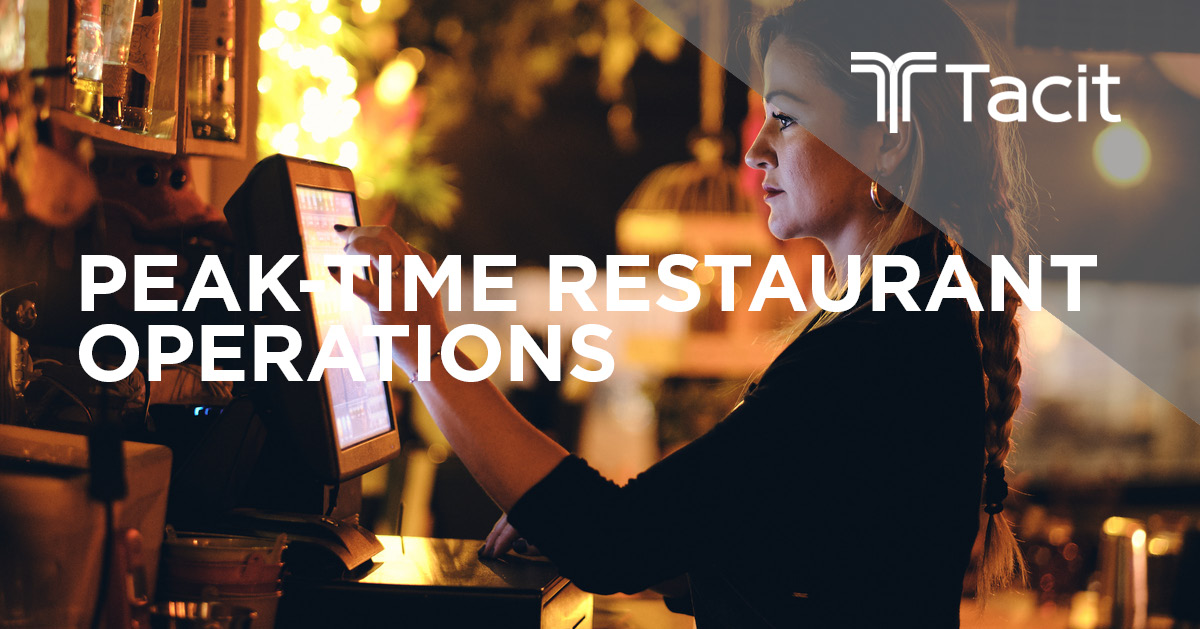
06 Aug Peak-time Restaurant Operations: How to Not Overwhelm Your Staff with Disjointed Omnichannel Orders
Peak-time restaurant operations are becoming more commonplace as the world moves toward omnichannel restaurant ordering. Omnichannel restaurant ordering refers to the ability of customers to order their favorite foods and products from any channel, including online, in-store, mobile apps, web-based browsers, third-party delivery service providers and traditional call-in orders. Unfortunately, the influx of orders coming from these new channels will place considerable pressure on your operation, which could overwhelm your staff. Instead of trying to manage each channel independently, follow these steps to keep your staff under control, and avoid the risks of disjointed omnichannel orders.
Integrate Third-Party Apps With Your Point-Of-Sale System
A significant change an organization can make to improve peak-time restaurant operations despite the increased demand for omnichannel ordering lies in integrating your third-party apps with your existing point-of-sale system. Failure to integrate will inevitably lead to errors, reports the Wall Street Journal and such issues further cascade to significant delays for customers.
Integration helps to avoid mismatching errors, ensure orders are accurate, reduce the physical demand on your staff, and much more. However, integration between third-party apps and existing systems can be difficult, depending on the age and integrity of your current systems. For companies that have already invested heavily in third-party delivery and in-house delivery, building the business case for integration between systems can be even more difficult. Regardless, integration is essential to success.
Train Staff to Manage Kitchen Workflows
Omnichannel ordering will present your organization with more information to make informed decisions, and this information is valuable to the kitchen staff. Instead of trying to micromanage everything, restaurant operators should train staff to manage kitchen workflows, especially during peak volume times. Peak-time restaurant operations will quickly become just standard operations as restaurants see fewer changes between regular service hours. Ultimately, people order food all the time, so limiting your capability to one or two peak-times per day will result in missed opportunities.
Never Shut Down Ordering Channels
It is also important to never shut down specific food ordering channels when handling peak-time restaurant operations. This does not mean shutting down ordering channels during vacancy hours, but it does include implementing the procedures and practices in place to reduce the physical demand on your kitchen staff. The kitchen staff will be responsible for the actual work, but it all goes back to efficient communication and application of technology to streamline the process of digital food ordering and to inform the kitchen staff.
Redesign Space to Keep Orders From Pilling Up
Depending on your facility, it may be necessary to redesign the pickup space to avoid the problems from orders piling up. Meanwhile, delivery service drivers should have their own way to pick up orders, and customers should enjoy the benefits of receiving their takeout orders at a counter if they prefer. For organizations operating multiple restaurants, integration further builds on productivity through gains in reporting. More information about your current operations help restaurant managers make informed choices and assigned staff appropriately. For extremely high peak-time restaurant operations, it may be necessary to increase resource availability, including ordering and storing more ingredients, hiring more people, and overseeing a larger workforce. It all builds on building a better customer experience without overwhelming your staff through accurate forecasting, explains QSR magazine.
Follow Through With Customer Feedback, Including Positive Results
Your kitchen staff will experience periods of high stress, and while it is easy to point out the things that go wrong, restaurant operators need to remember to give praise for accomplishments and positive experiences. Any feedback received from consumers should be applied to the kitchen workflows, helping your team members become more efficient and productive.
Get Involved With Your Team
Another factor in managing peak-time restaurant operations is simple; restaurant operators need to be involved with their team members. In today’s world, a disconnected manager will lead to higher rates of employee dissatisfaction and build a sense of unstable operations for kitchen staff and management. This disconnect contributes to poor customer experiences. By making yourself visible to your team and working together, you build rapport, increasing satisfaction, and contributing to higher productivity.
Choose the Right, Strategic Partner to Keep Restaurant Staff From Becoming Overwhelmed
The demand placed on your restaurant during peak-time restaurant operations will continue to increase as more customers opt to take advantage of online ordering capabilities. Instead of hoping you can accomplish this with your existing staff, follow the tips to implement an integrated, unified approach to food order management into your existing systems, such as your POS system. This is the only way to achieve success in today’s fast-paced, omnichannel food ordering environment and remain a viable option for customers truly. Find out more about what your organization needs to keep staff working smoothly during peak-time omnichannel orders by visiting Tacit online now to ask about our integration capabilities.

No Comments